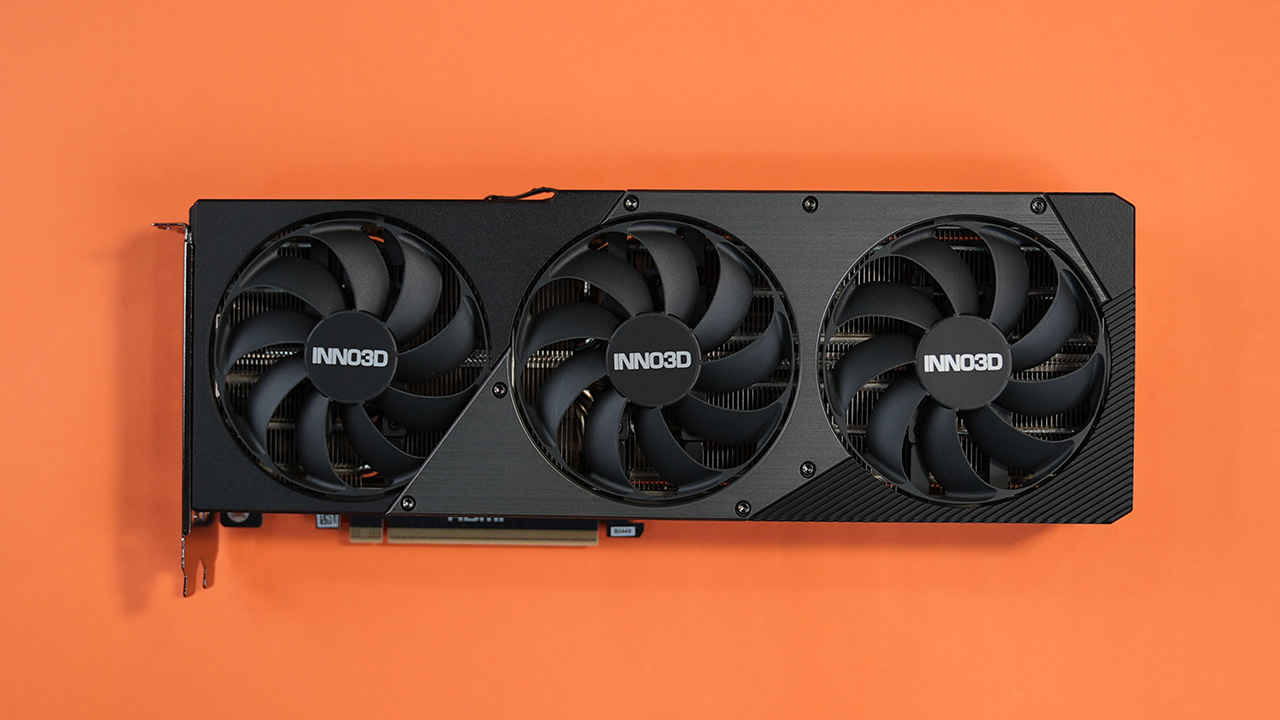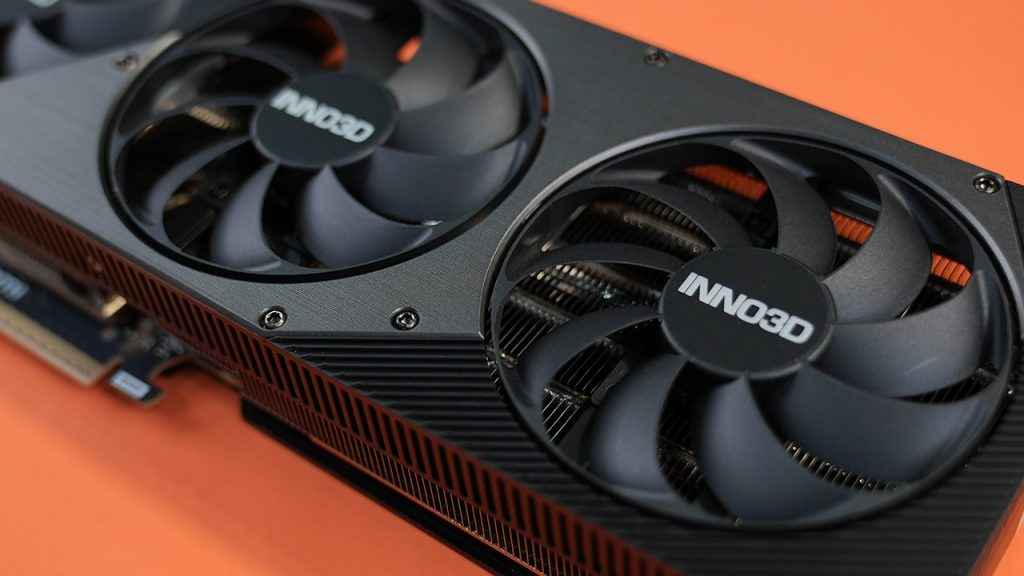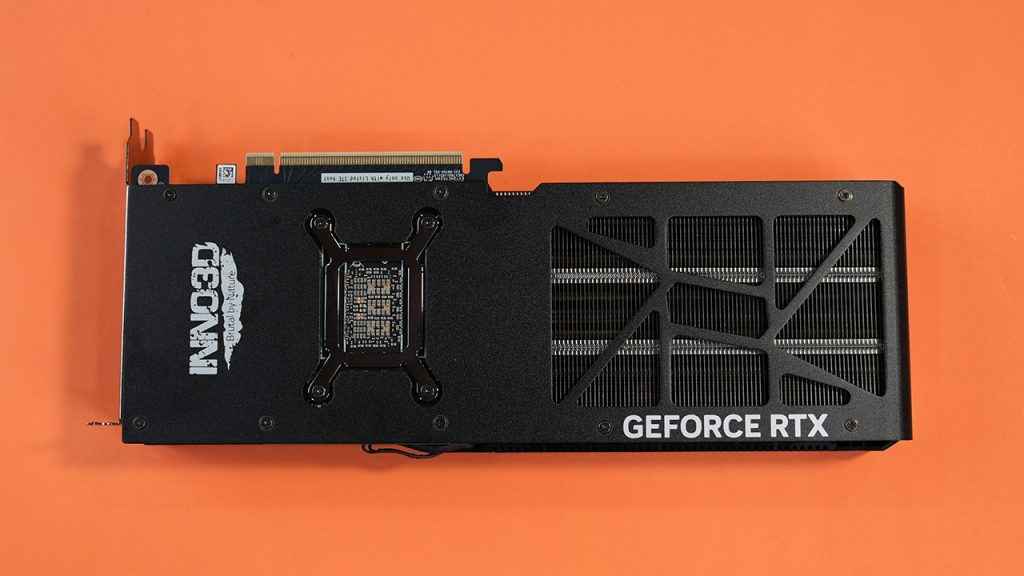

INNO3D GeForce RTX 5070 Ti X3 OC
The INNO3D GeForce RTX 5070 Ti X3 OC graphics card presents a well-considered balance of robust materials, practical dimensions, and reliable cooling solutions. While it may not deviate sharply from the standard dimensions of premium graphics cards, it is moderately elongated, measuring roughly 300 mm in length, 116 mm in height, and occupying 2 slots in thickness. This sizing makes it compatible with a wide range of mid- to full-tower cases, though prospective owners should always double-check clearances before purchase.


One of the standout elements of this card’s construction is its sturdy shroud, fashioned from a combination of metal and reinforced plastic. This approach ensures that the heatsink is well protected without imposing an undue weight penalty. There is a subtly brushed finish on the shroud, lending the card a sleek and understated appeal that should blend in seamlessly with most system builds.


Underneath, the card employs a triple-fan configuration, each fan measuring roughly 90 mm. They are arranged in a line along the aluminium fin stack, ensuring uniform airflow across the entire length of the heatsink. All three fans are spin in the same direction unlike some of the newer designs we’ve seen recently wherein the middle fan spins in the opposite direction as opposed to the fans at the extremities. The heatsink itself features a dense arrangement of stacked fins and multiple copper heat pipes that make direct contact with the GPU core, transferring heat efficiently for stable operation under demanding loads.
The PCB underneath has a clean layout, with carefully positioned components and a robust power delivery system befitting a factory-overclocked model. INNO3D has opted for a 16-pin power connector (often referred to as the 12VHPWR connector in NVIDIA’s newer line-ups), ensuring that the card can draw sufficient power without cluttering the design with multiple cables. The older PCIe connectors would have been preferred on higher wattage cards since the 12VHPWR connectors to burn quite often.
Connectivity is handled by a typical selection of ports, comprising three DisplayPort 2.x outputs and one HDMI 2.1 port. Collectively, the build quality of the INNO3D GeForce RTX 5070 Ti X3 OC is respectable, offering a reassuring combination of durable materials, a well-thought-out cooling setup, and a refined aesthetic that should suit a variety of system builds.
The NVIDIA GeForce RTX 5070 Ti has most of the same specifications as the RTX 5080, but is slightly reduced. It features six GPCs (Graphics Processing Clusters), one less than the RTX 5080. There are 35 TPCs (Texture Processing Clusters) within the six GPCs, and then there are 70 SMs (Streaming Multiprocessors) with a total of 8960 CUDA Cores. Compared to the RTX 5080, that is approximately 17% fewer CUDA cores, therefore, we should see a similar difference in synthetic benchmarks. However, real-world gaming performance depends on optimizations, as it always has.
| NVIDIA RTX 5070 Ti Super Specifications | |||
| RTX 5090 | RTX 5080 | RTX 5070 TI | |
| Graphics Processing Cluster | 11 | 7 | 6 |
| Texture Processing Cluster | 85 | 42 | 35 |
| Streaming Multiprocessors | 170 | 84 | 70 |
| CUDA Cores | 21760 | 10752 | 8960 |
| Tensor Cores | 680 | 336 | 280 |
| RT Cores | 170 | 84 | 70 |
| Texture Units | 680 | 336 | 280 |
| ROP Units | 176 | 128 | 128 |
| Base Clock | 2017 MHz | 2295 MHz | 2300 MHz |
| Boost Clock | 2407 MHz | 2617 MHz | 2452 MHz |
| Memory Clock | 1750 MHz | 1875 MHz | 1750 MHz |
| Memory Data Rate | 28 GBps | 30 GBps | 28 GBps |
| L1 Cache per SM / Array | 128 KB | 128 KB | 128 KB |
| L2 Cache Size | 96 MB | 64 MB | 64 MB |
| Total Video Memory | 32 GB | 16 GB | 16 GB |
| Video Memory Type | GDDR7 | GDDR7 | GDDR7 |
| Memory Interface | 512-bit | 256-bit | 256-bit |
| Total Memory Bandwidth | 1.79 TB/s | 960 GB/s | 896 GB.s |
| Process Node | TSMC 4N | TSMC 4N | TSMC 4N |
| Total Graphics Power | 575 W | 360 W | 300 W |
Even the clock speeds are comparable, with a base clock of 2300 MHz and a boosted clock of 2452 MHz. The memory clock speed has been reduced to 1750 MT/s, resulting in a significant performance drop compared to the RTX 5080. In terms of memory capacity, we have the same 16 GB of GDDR7 memory connected to a 256-bit memory bus. The overall memory bandwidth is 896 GB/s, which is somewhat lower. Furthermore, the net power consumption appears to be limited to 300 Watts.
The INNO3D GeForce RTX 5070 Ti X3 OC that we have has a base clock of 2295 MHz and a boost clock of up to 2482 MHz, giving it a slight advantage over the reference specifications. Furthermore, it has the same configuration as the MSI 5070 Ti that we previously tested.
We have featured some of the older series cards along with most of the RTX 30 and RTX 40 series cards including the Super cards. A few AMD RX 7000 series cards were also thrown into the mix to see how well the cards perform against the competition. Like always, we have a section for synthetic benchmarks as well as gaming benchmarks with plenty of charts to showcase differences. Coming to the rig, this is what we’re running our benchmarks on.
3DMark is a popular benchmarking tool for graphics cards and gaming systems. It provides a comprehensive suite of tests that measure various aspects of a GPU’s performance. 3DMark includes several benchmarks, such as Time Spy, Steel Nomad, Speed Way, and Fire Strike. Time Spy is a DirectX 12 benchmark that tests the performance of a GPU and CPU in a variety of graphically demanding scenes. Steel Nomad, successor to Time Spy, is a DirectX 12 benchmark that focuses on real-time ray tracing and other advanced graphics features. Then there’s Speed Way, a DirectX 12 benchmark designed to test the performance of a GPU and CPU in a high-speed racing game environment. And for legacy benchmarks, we have Fire Strike which is a DirectX 11 benchmark that tests the performance of a GPU and CPU in a variety of gaming scenes.
3DMark Port Royale is a synthetic benchmark that uses a real-time ray tracing scene to simulate the reflections, shadows, and other visual effects that are possible with ray tracing technology. Port Royale is a demanding benchmark that can be used to compare the performance of all current graphics cards with real-time hardware-accelerated ray-tracing.
Blender is a great 3D modeling and animation software that’s open-source and it is the preferred tool for folks wanting to get their hands dirty with 3D modeling. We used version 4.3. There are three scenes in Blender – monster, junkroom and classroom – with varying design complexities that provide an array of different textures that can tax the GPU properly.
This benchmark utilises OpenCL to generate photorealistic results by strictly adhering to the physics of light, a process known as physically-based rendering. Rendering progress is gauged by the number of samples calculated, which can be visualised as “light particles” that have interacted with the scene and reached the camera’s sensor. As a physically-based renderer, the results closely reflect how GPUs are used in industrial rendering applications.
Basemark GPU is a nice benchmark to compare the performance of different graphics APIs between cards. We can use the same textures with OpenGL, Vulkan and DirectX 12 to see if the graphics card excels at any particular API more than the rest or if the performance is consistent across the board.
The Procyon AI Computer Vision Benchmark evaluates the performance of AI inference engines on your hardware using a variety of machine-vision tasks and popular neural networks. The benchmark scores reflect the performance of on-device inferencing operations compared to the same operations run on the CPU or GPU. This allows you to measure the performance of AI accelerators and compare different AI inference engines from various vendors.
The INNO3D GeForce RTX 5070 Ti X3 OC Edition graphics card, despite its overclocked configuration, maintains efficiency during idle periods, drawing a mere 22 watts of power. This minimal power usage contributes to lower system temperatures during routine tasks such as media consumption and general computing. However, under heavy workloads, like demanding games or resource-intensive tasks such as 3D rendering, the power demand increases substantially, peaking at 300 watts.
Throughout our rigorous testing, we pushed the graphics card to its maximum capacity with demanding gameplay scenarios. We were pleased to discover that the temperature remained below 70 degrees Celsius, demonstrating effective thermal management and a robust cooling solution that efficiently dissipates heat, even under heavy load. During idle periods with minimal activity, the graphics card maintained a comfortable temperature of approximately 45 degrees Celsius. This low idle temperature suggests that the card’s power management and fan control are optimized for energy efficiency and quiet operation.
The INNO3D GeForce RTX 5070 Ti X3 OC graphics card delivers exceptional performance for its price point, especially for 1440p and 4K gaming, boasting up to 30% faster speeds than its predecessor, the RTX 4070 Ti. Its efficient thermal design ensures cool and quiet operation even under heavy load. While the 12 VHPWR connector might be a concern for some, the card is currently retailing for around INR 98,000-101,000 which is quite bloated and should be ideally around INR 82,000 in India. Market fluctuation are common but 20K above MSRP is a little too much. Overall, the INNO3D GeForce RTX 5070 Ti X3 OC, particularly the compact SFF-Ready model, is an excellent option for gamers seeking high performance. All it needs it a reasonable price tag.